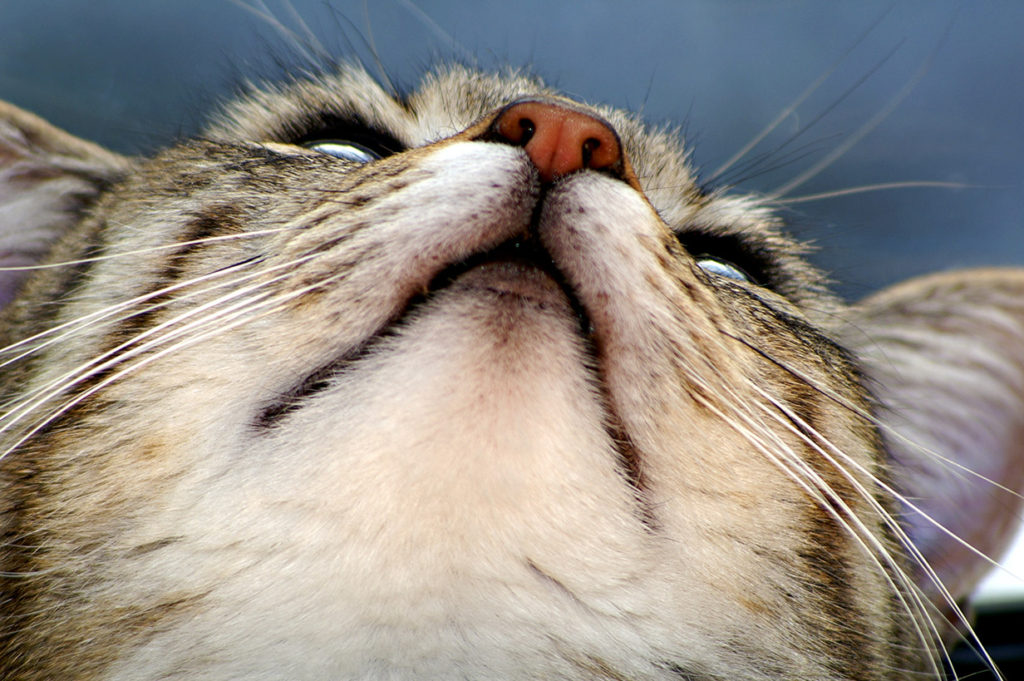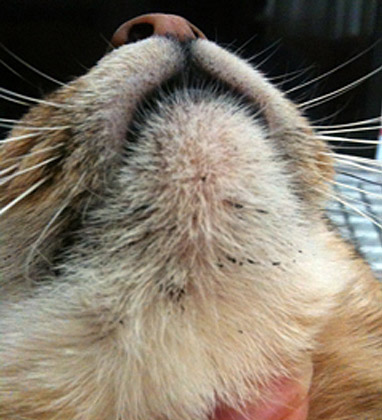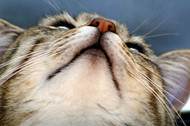Chin Acne in Cats
26th Jul 2023

What is chin acne?
Acne, in cats, is a common dermatologic condition.
Chin acne is a disorder resulting from follicular keratinization. Keratinization is the overproduction of keratin, a protein found in the outer layer of the skin. If this excess keratin becomes trapped in the hair follicles, comedones or “blackheads” form. In turn, if these comedones become infected with bacteria, “pimples” may form.
Therefore, feline chin acne is similar to the acne experienced by humans.
What causes chin acne?
It is thought that the abnormal follicular keratinization is due to one of the following factors:
- A primary disease which causes excessive sebum production (the natural oily “moisturizer” produced by the skin) ie. Hyperactive sebaceous glands
- Sensitivity to foods or chemicals in the diet
- Poor grooming habits.
- Skin allergies, which can be caused as a result of cats rubbing their chins on people or things which leads to irritation or inflammation (contact dermatitis)
- Reactions to certain medications, hormone imbalances
- Underlying systemic condition like a viral or fungal infection
- A compromised immune system, and stress

In a significant number of cats, there is, quite surprisingly, an association between using coloured plastic food dishes and chin acne. In this situation, if the food dishes are changed to ceramic, glass, or stainless steel, the condition may resolve without any treatment, as the problem can be due to a plastic or dye allergy.
Diet can also often be a contributing factor. Therefore, it is important to evaluate your cat’s diet. Food allergies are often the cause and it is commonly found that by removing unnecessary grains and carbohydrates from the diet, as well as giving cats a break from both seafood and poultry as protein sources, can make a huge difference in preventing a recurrence of feline acne.
Cats only require a very small amount of carbohydrates in their diet and their guts do not possess the ability to break down grains and vegetable matter. Likewise, many cats do develop allergies to fish and poultry, as these are so commonly found as a base, in many processed and dry foods.
Regardless of the cause, the result is that the hair follicle becomes blocked and therefore causes an infection which results in the clinical signs described.
Clinical signs of chin acne:
The most common clinical signs associated with chin acne are the “dirty” appearance of the chin and lesions which may appear on the chin, the lower lip and/or the upper lip. Careful observation will reveal the “blackheads” and infected follicles. In severe cases, there may be hard, crusty lesions that are sore when touched. Both male and female cats can develop chin acne.
How chin acne is diagnosed:
Diagnosis is based on clinical signs and medical history. Occasionally, blood and urine tests and skin culture and sensitivity tests are required. If the lesions do not have a typical appearance, biopsies or skin scrapings may be recommended to rule out more severe conditions.
How feline chin acne is treated:
Your vet will be able to recommend the best course of treatment, which may involve facial treatments or special shampoos to cleanse the affected area and hair follicles. In some cases, the hair may need to be clipped short. More severe / chronic cases may require a different approach.
The pognosis for a cat diagnosed with chin acne:
Some cats only develop chin acne once in their lives, whereas, in some cats, it will be a recurring problem.
It is important to identify the cause, to avoid recurrence and so that the correct treatment can be carried out.
Most cases improve with better hygiene or to a simple change in either food or food dishes, as allergies can be a contributing factor. More severe cases may require aggressive treatment to control the problem.
However, as with so many feline conditions, an inappropriate diet can so often be to blame. Switching to a species appropriate, highly digestible, high protein diet, is sometimes all it requires for your cat to return to good health.
As in all situations, all cat owners should remember to closely follow instructions given by their veterinarian.

